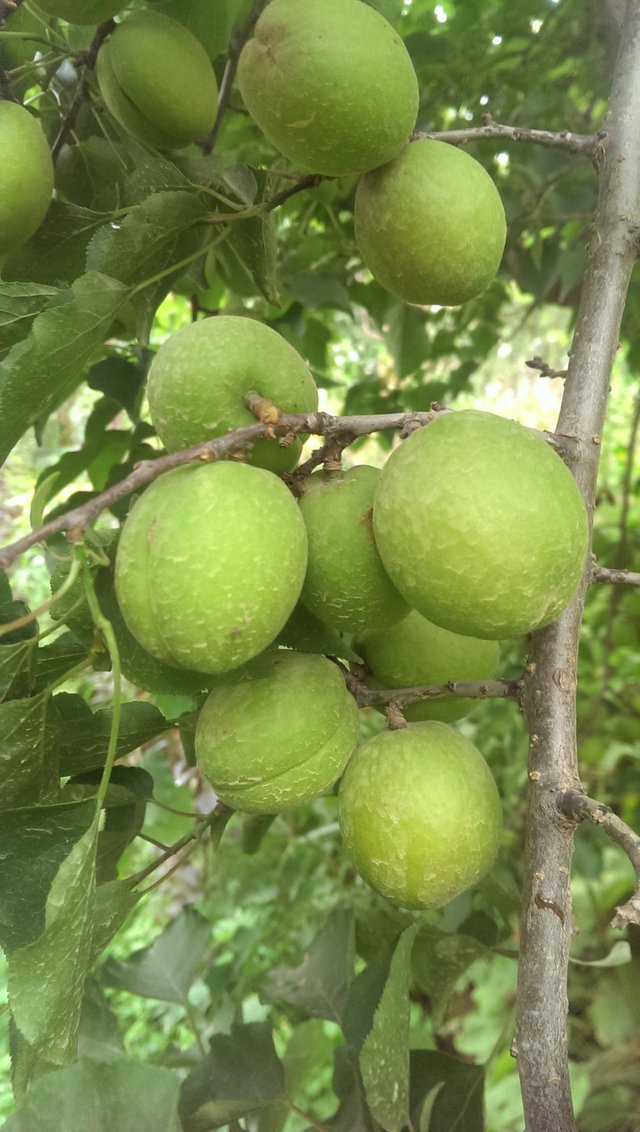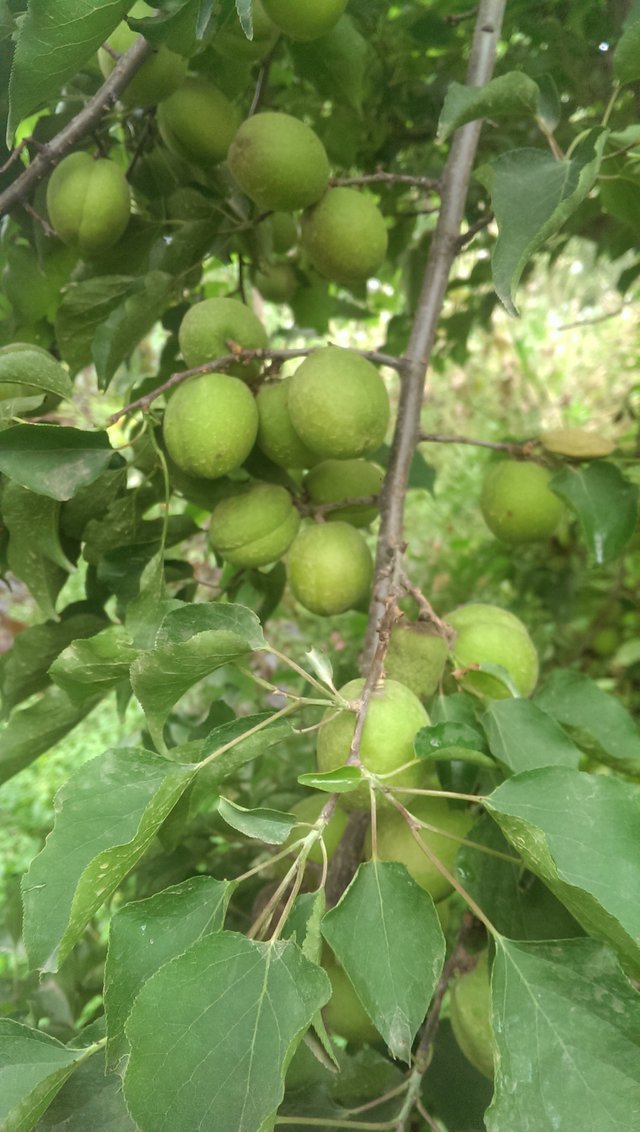

The origin of the apricot is disputed and unsettled. It was known in Armenia during ancient times, and has been cultivated there for so long that it is often thought to have originated there.[8] Its scientific name Prunus armeniaca (Armenian plum) derives from that assumption. For example, the Belgian arborist baron de Poerderlé, writing in the 1770s, asserted, "Cet arbre tire son nom de l'Arménie, province d'Asie, d'où il est originaire et d'où il fut porté en Europe ..." ("this tree takes its name from Armenia, province of Asia, where it is native, and whence it was brought to Europe ...").[9] An archaeological excavation at Garni in Armenia found apricot seeds in an Eneolithic-era site.[10] Despite the great number of varieties of apricots that are grown in Armenia today (about 50),[8] according to the Soviet botanist Nikolai Vavilov, its center of origin would be the Chinese region, where the domestication of the apricot would have taken place. Other sources say that the apricot was first cultivated in India in about 3000 BC.[11]
Its introduction to Greece is attributed to Alexander the Great;[11] later, the Roman General Lucullus (106–157 BC) also would have imported some trees – the cherry, white heart cherry, and apricot – from Armenia to Rome.[citation needed] Subsequent sources were often confused about the origin of the species. John Claudius Loudon (1838) believed it had a wide native range including Armenia, the Caucasus, the Himalayas, China, and Japan.[12]
Apricots have been cultivated in Persia since antiquity, and dried ones were an important commodity on Persian trade routes. Apricots remain an important fruit in modern-day Iran.[citation needed]
Egyptians usually dry apricots, add sweetener, and then use them to make a drink called amar al-dīn.[citation needed]
In England during the 17th century, apricot oil was used in herbalism treatments intended to act against tumors, swelling, and ulcers.[13]
In the 17th century, English settlers brought the apricot to the English colonies in the New World. Most of modern American production of apricots comes from the seedlings carried to the west coast by Spanish missionaries. Almost all U.S. commercial production is in California, with some in Washington and Utah.
Cool @mohammadsajad ...never had a chance to know the history of Apricots ...
Downvoting a post can decrease pending rewards and make it less visible. Common reasons:
Submit
will vote your content as soon as my voting power restores to 100%. if i do now you will only get 76% of vote ...
Downvoting a post can decrease pending rewards and make it less visible. Common reasons:
Submit
Thanku bro... #nageshwar0369
Downvoting a post can decrease pending rewards and make it less visible. Common reasons:
Submit
:)
Downvoting a post can decrease pending rewards and make it less visible. Common reasons:
Submit